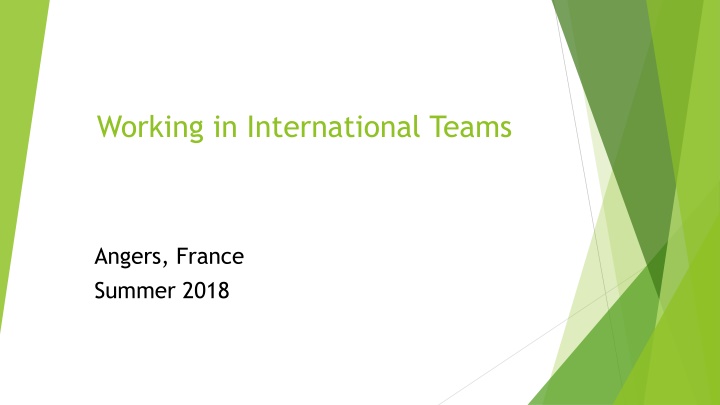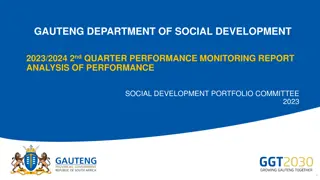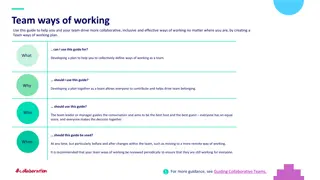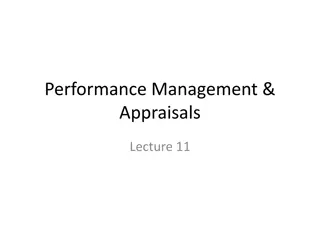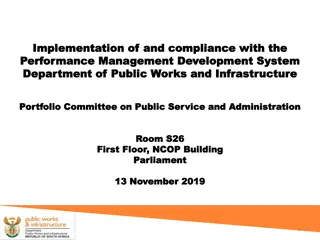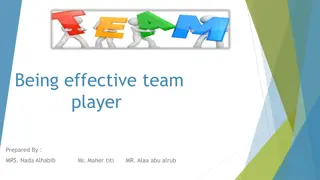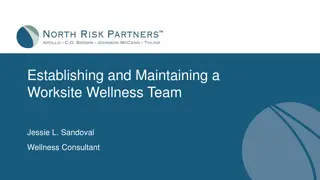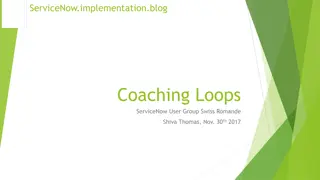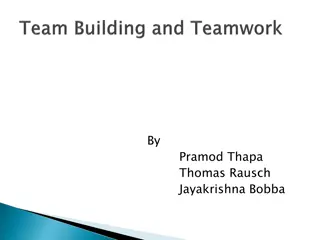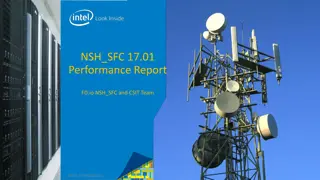Enhancing International Team Performance: Strategies and Considerations
Exploring the dynamics of working in international teams, this comprehensive guide covers key differences between groups and teams, benefits and disadvantages of team usage, factors influencing the use of teams, structural considerations, stages of team development, and effective strategies for team leadership, decision-making, and cohesion. Emphasizing trust building, cultural awareness, and conflict management, the content provides valuable insights and practical tips for maximizing team effectiveness in diverse settings.
Download Presentation

Please find below an Image/Link to download the presentation.
The content on the website is provided AS IS for your information and personal use only. It may not be sold, licensed, or shared on other websites without obtaining consent from the author.If you encounter any issues during the download, it is possible that the publisher has removed the file from their server.
You are allowed to download the files provided on this website for personal or commercial use, subject to the condition that they are used lawfully. All files are the property of their respective owners.
The content on the website is provided AS IS for your information and personal use only. It may not be sold, licensed, or shared on other websites without obtaining consent from the author.
E N D
Presentation Transcript
Working in International Teams Angers, France Summer 2018
Groups and Teams How are groups and teams different? What are the three key differences between groups and teams? What are some of the benefits of using teams? Are there any disadvantages to using teams?
Simple Complex Task Complexity ASSIGN TO TEAM ASSIGN TO INDIVIDUAL No time Plenty of time Time Essential Not essential Commitment Factors in the use of Teams
Structural Issues in Teams How big should the group be? Is there an ideal group size? How should we select group members? What determines group composition? Are there some additional considerations when working in international teams?
Adjourning Performing Norming Storming Forming Ineffective Group Mature Team Group Maturity Stages of Team Development
Helping Teams Become Effective Clear common goals: SMART goals Careful selection: complementary skills & diversity Building cohesion: give teams time to establish norms Developing Trust: develop mutual accountability Team Leadership: leader as coach / facilitator Training: task relevant skills training Managing Team Conflict: conflict can be functional Reward Structure: combine individual & team rewards Organizational Structure: structural changes Building an Ethical Collaborative Culture: collaborative culture
Integrity Trust Competence and Hard work Building Trust
Team Decision Making Significant cross-cultural differences in how decisions are made What people consider to be the purpose of meetings How people view compromise Preferred decision making method Time frame Finality factor Speed of implementation
Team Leadership Leader s role changes as team matures International team leaders MUST be aware of cultural differences Communication challenge Leadership style Language Meeting management Balance stance between team and HQ
Team Leadership & Cohesiveness Transaction leader: Instrumental cohesion Fragile Transforming Leader: Emotional Cohesion Moderate Transcendent Leader: Structural Cohesion Strongest
Cultural Differences & Leadership Style Thinking about the cultural differences discussed, what implications can you draw for team leadership style? Power Distance Uncertainty Avoidance Individualism / collectivism Masculinity / Femininity OR performance / humane orientation Universalism / particularism Neutral / affective Achievement / ascription Mono-chronic / poly-chronic High / low context
Roles in Teams Task Facilitating Roles Relationship Building Roles Supporting Harmonizing Tension relieving Confronting Energizing Developing Consensus building emphasizing Direction giving Information seeking Information giving Elaborating Urging Monitoring Analyzing Reality testing Enforcing Summarizing
Conflict Management Rational Conflict Agreement Disagreement Emotional Conflict Agreement Unity Disagreement Disagreement Conformity Confrontation
Providing Feedback to Team Members Focus on behaviors Focus on observations Focus on description Focus on specific situation / incident Focus on the present Share ideas and information Give feedback that is valuable Give feedback at appropriate time and place
International Virtual Teams Angers, France Summer 2018
Electronic Communication What are some electronic communication channels? What are some advantages of electronic communication? What are some potential disadvantages of electronic communication?
Virtual Teams What are some of the advantages of using virtual teams? What are some of the challenges of using virtual teams? What are the challenges detailed in Oertig & Buergi s article?
Virtual team challenges Leadership challenge Time differences Lack of face-to-face contact Also Managing the task Managing people Managing language and cultural issues Managing the matrix
International Virtual Teams What are some of the recommendations made in Oertig & Buergi s article to addressing the challenges international virtual teams can face?
